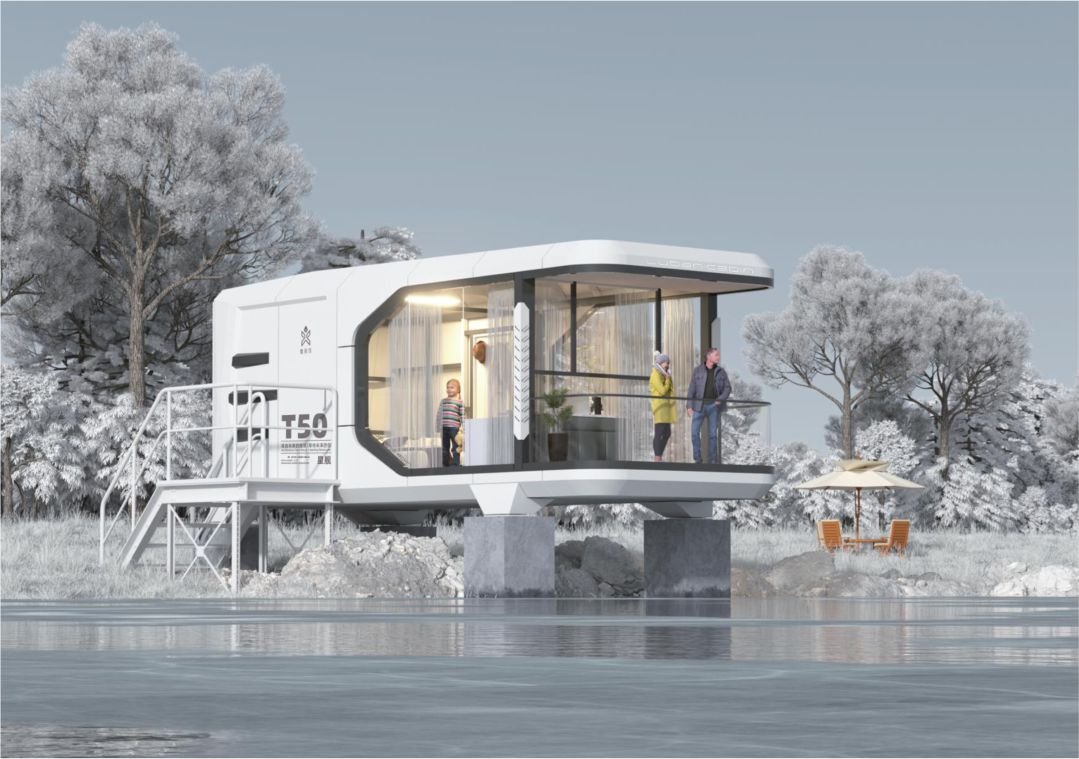The Ultimate Guide to Living in Capsule Houses: Pros and Cons
Wiki Article
Uncomplicated Homebuilding With Modern Modular Home Styles

Advantages of Modular Home Styles
Modular home designs supply numerous benefits that make them an enticing option for several house owners. One of the key advantages is cost-effectiveness. Since modular homes are constructed in a factory setup, building contractors can streamline the process, reducing labor and material expenses, which often translates to decrease rates for customers.Furthermore, modular homes are known for their speed of building and construction. pod homes. The regulated atmosphere of a factory allows for efficient assembly, enabling homeowners to move into their new residence much quicker than standard structure techniques would certainly permit
Energy efficiency is one more considerable benefit. Several modular homes are developed with energy-efficient systems and sustainable materials, resulting in reduced energy costs and a lowered environmental impact.
Additionally, modular layouts supply a high level of modification. Homeowners can typically choose from various layouts, materials, and surfaces, guaranteeing that their home satisfies individual choices and lifestyle demands.
Last but not least, modular homes are developed to meet rigorous building ordinance and requirements, guaranteeing sturdiness and security. Overall, the mix of cost, speed, effectiveness, quality, and modification makes modular home styles an eye-catching choice for a wide variety of purchasers.
The Modular Construction Refine
The modular construction procedure involves a methodical technique that significantly differs from conventional structure methods. Each module is built with the exact same products and requirements as a site-built home, including insulation, electric circuitry, and pipes systems.As the components are created, the website prep work can take place concurrently, including foundation work and utility installations. This identical procedure greatly reduces the overall timeline for completion. Once the modules prepare, they are carried to the building site, where they are craned into position and securely collaborated.
The lasts entail ending up touches, such as outside house siding, roof, and interior outlining. This streamlined approach not only decreases building and construction waste yet also enhances power efficiency with well-coordinated building practices. Overall, the modular building process supplies a much faster, cost-efficient, and ecologically friendlier option to traditional home building.
Customization Options Available
Exploring modification choices in modular home styles permits home owners to tailor their home to their one-of-a-kind choices and way of lives. Among one of the most attractive aspects of modular homes is the adaptability they use in style and layout. Property owners can choose from a selection of layout, ranging from open-concept rooms to a lot more conventional formats, guaranteeing that the home fits their specific demands.Along with architectural modifications, modification reaches visual elements. Homeowners can choose from an extensive combination of products, finishes, and shades, consisting of kitchen cabinetry, counter tops, floor covering, and siding. This degree of personalization allows homeowners to create a cohesive layout that shows their individual style.
In addition, modular homes can incorporate energy-efficient functions and wise modern technology options. Homeowners can opt for solar panels, energy-efficient windows, and progressed heating and cooling systems, adding to both comfort and utility cost savings.
Last but not least, numerous makers supply the opportunity to add distinct components, such as built-in shelving, custom-made storage rooms, or exterior home. This comprehensive variety of customization choices makes sure that modular home layouts can be as distinct and useful as the households who occupy them.
Sustainability in Modular Houses
Sustainability is a crucial consideration in contemporary home structure, and modular homes are significantly designed with green techniques in mind. These frameworks minimize waste with efficient manufacturing processes, as parts are made in a regulated setting (pod homes). This not just minimizes the amount of material discarded throughout building and construction yet additionally reduces the carbon footprint related to traditional structure approachesModular homes commonly integrate sustainable products, such as recovered wood, recycled metal, and low-VOC paints, which contribute to much healthier interior air high quality. Many layouts integrate energy-efficient systems, consisting of solar panels, progressed insulation, and high-performance windows, which reduced energy intake and utility costs over time.
The modular building and construction technique additionally enables far better planning of energy use and source monitoring throughout the structure lifecycle. By making use of premade elements, builders can dramatically decrease transport discharges, as products are delivered wholesale to the site.
Additionally, the adaptability of modular homes enables for future upgrades, ensuring that house owners can modify their home to consist of a lot more sustainable innovation as it becomes offered. Overall, sustainability in modular homes represents a forward-thinking strategy to environmentally accountable living.
Cost-Effectiveness of Modular Structure
Modular homes not just focus on sustainability but also provide considerable cost-effectiveness contrasted to typical building and construction methods - pod homes. One of the primary financial advantages is the reduction in labor costs. Since a considerable part of the building and construction procedure takes place in pod homes a regulated manufacturing facility setting, labor performance is enhanced, causing reduced general costs
Furthermore, making use of standardized materials and layouts reduces waste, resulting in cost savings that can be handed down to customers. The moment cost savings connected with modular building likewise add to its affordability; tasks can be finished in a portion of the time it takes for typical builds, permitting house owners to relocate faster and start benefiting from their financial investment.
In addition, modular homes usually integrate energy-efficient functions, which can lead to reduced energy expenses over time, more improving their cost-effectiveness. Financing alternatives for modular homes are likewise becoming extra positive, with numerous lending institutions acknowledging their value and security.
Conclusion
Finally, contemporary modular home designs provide a transformative strategy to homebuilding, defined by efficiency, customization, and sustainability. The structured building and construction process improves quality and adherence to building regulations while providing home owners the chance to individualize their home. Furthermore, the unification of energy-efficient systems substantially reduces energy expenses and ecological influence. Eventually, modular homes stand for a forward-thinking solution that resolves contemporary real estate demands and promotes a more lasting future in residential building.
Report this wiki page